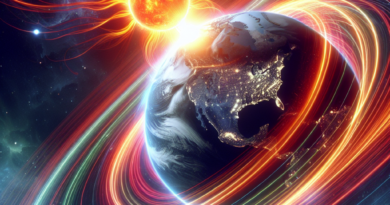Black hole grows too fast: what we know and consequences
There is a black hole discovered for some time that is confusing astronomers all over the world.
It is located in the GN-z11 galaxy, one of the furthest from Earth but smaller in size than the Milky Way.
What is strange is that this black hole has a huge size of 1.6 million solar masses and is continuing to grow at a rapid pace, swallowing everything that passes by it.
What astronomers cannot understand is why it grew so rapidly in a very short time, considering that it formed when the universe was very young and only 420 million years old, or 3% of its current age.
An unusual fact to which experts have tried to give three different theories.
Black hole grew too quickly: the study The James Webb space telescope managed by NASA, the European and Canadian Space Agency made the discovery of this particular black hole.
Coordinated by the British University of Cambridge, the research was conducted in collaboration with the Scuola Normale Superiore of Pisa.
The result was published on arXiv, the platform that hosts articles not yet subjected to scrutiny by the scientific community.
The puzzle that experts are trying to solve is not only how it was possible for this enormous black hole to be born in such a small galaxy but also how it managed to grow so rapidly in such a short period, considering that it formed after the Big Bang.
There are three tracks followed Astronomers follow three tracks to try to provide an answer to the dilemma.
The first is that the black hole was born during the Big Bang, when matter was subjected to very high densities and continuous fluctuations.
The second theory is that it skipped all stages of growth, as black holes were believed to do, thus rapidly becoming an adult.
The third hypothesis, which is also the most extraordinary and unthinkable, is that black holes are capable of increasing their mass dramatically.
Much faster than anyone always imagined.
It's not easy to answer.
According to Roberto Maiolino, an Italian researcher at the University of Cambridge «he was born just 440 million years after the Big Bang.
It is impossible, as far as we know, that it could have eaten so much and reached a mass equivalent to a million Suns in such a short time, earning itself the label of supermassive." Yet he did it.
For Maiolino who led the study, there is only one way to understand how it was possible: by looking for other supermassive progenitor black holes that formed even before stars.
More information could come from the construction of the ESO (European Southern Observatory) ELT telescope in the Atacama Desert in Chile.
This telescope has a mirror 5 times larger than Webb and will provide even sharper images.
And this will help with the difficult research from Space and Earth.
Maiolino then wanted to reassure that the Earth is not in danger.
«There is no reason to worry.
They are very fascinating objects and we are in no danger," he said.
read also Space as a geopolitical scenario: the implications of the race to the Moon (and beyond)




